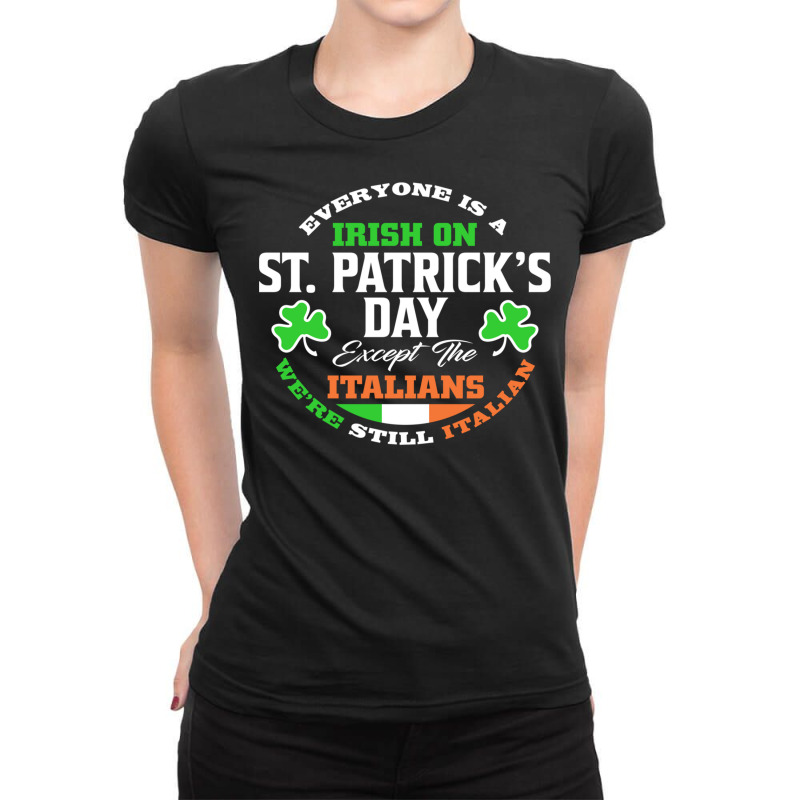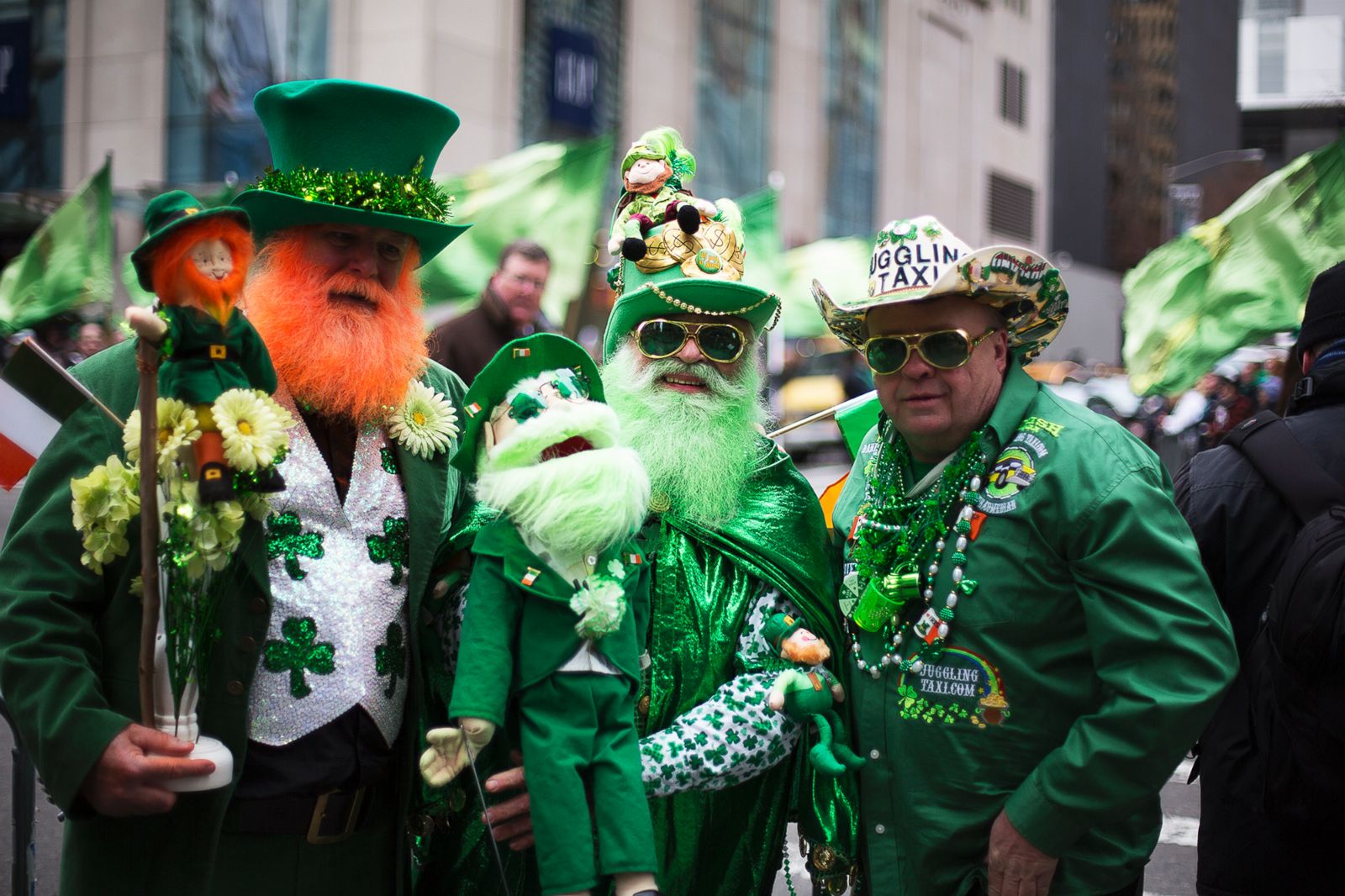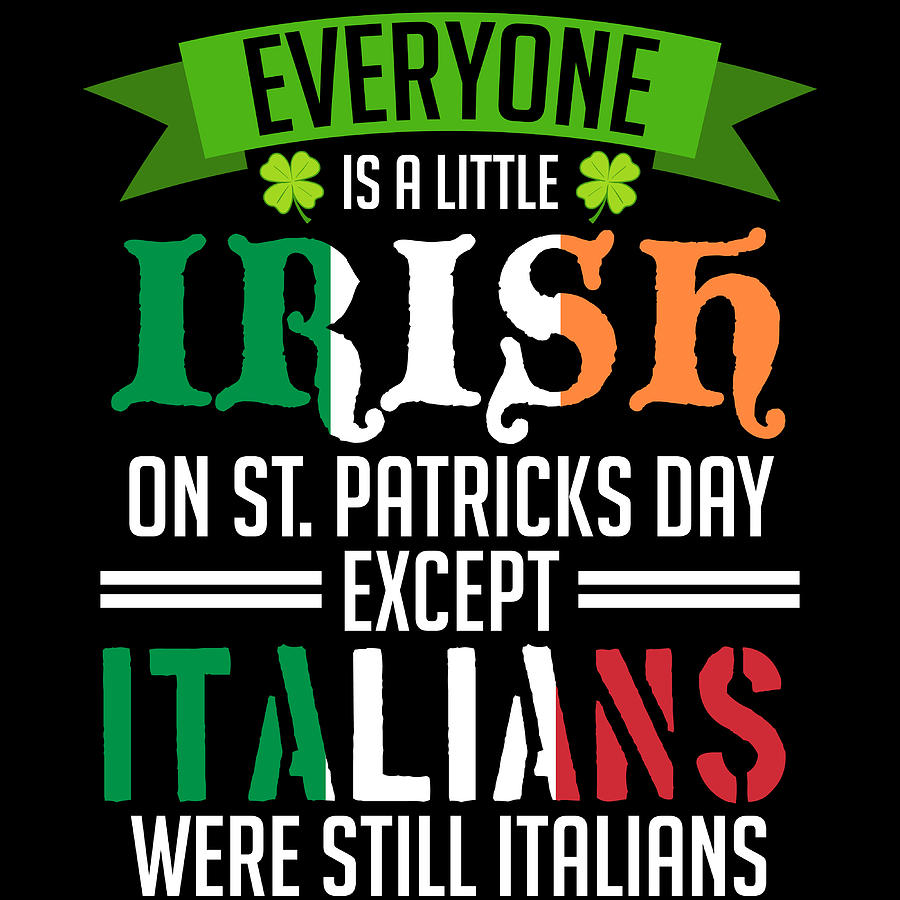Gallery
Photos from events, contest for the best costume, videos from master classes.
 |  |
 |  |
 |  |
 |  |
 |  |
 |  |
So, they all packed up and moved to America, bringing St. Patrick's Day with them. The Colors of St. Patrick's Day. Surprised by Color. Elementary school celebrations in my day encompassed the usual cliches: The pot of gold, the rainbow, the little green clad men, green grass, and shamrocks. We never received any of the real history or even the Nonetheless, St. Patrick's Day was co-opted by Protestants, who opted to don their representative orange instead of green for the day. The white stripe separating the green and orange ones on the country's flag is indicative of the unity both religions maintain, meaning there's no bad blood no matter what color you don. Some people now choose to wear both green and orange on St. Patrick’s Day as a symbol of unity and peace between different religious and political factions in Ireland. Despite its controversy, the choice to wear orange on St. Patrick’s Day serves as a reminder of Ireland’s rich yet tumultuous history. The original color of St. Patrick’s followers is actually blue, and not green! Green is symbolic of St. Patrick’s Day due to the lush green landscapes that make up the most of Ireland – question is would Patrick approve of this? St. Patrick’s birth name was Maewyn Succat. The first St. Patrick’s Day parade was held in Boston. Green clothing, green beer, green food; just green, green, green, everywhere green. But for some, orange is the color of choice to celebrate the patron saint of Ireland thanks to its strong ties to the day. To understand why we have to go back roughly 1,600 years to when St. Patrick walked the earth during the fifth century. Every year, as March 17th rolls around, we’re smothered beneath an avalanche of green—green beer, green shamrocks, green everything—as if someone accidentally detonated a giant Leprechaun-themed confetti bomb. Amid this nauseating sea of verdant monotony, a dissenting few choose to wear orange, not as an alternative color choice, but as a rebuke to the cloying [] While most St. Patrick’s Day enthusiasts bust out their green clothing on March 17, there are some who would rather wear orange. The reason has everything to do with religion. St. Patrick’s Incorporating orange and green into St. Patrick’s Day outfits can be a creative way to celebrate and acknowledge Ireland’s diverse heritage. History of Wearing Orange on St Patrick’s Day. Wearing orange on St. Patrick’s Day has its roots in Irish history, specifically, the events surrounding the Battle of the Boyne in 1690. St. Patrick’s Day usually conjures images of partying, Catholicism, Irish nationalism and, perhaps most famously, the color green: green clothes, green shamrocks, green beer and green rivers. While Catholics were associated with the color green, Protestants were associated with the color orange due to William of Orange – the Protestant king of England, Scotland and Ireland who in 1690 defeated the deposed Roman Catholic King James II. Why do people wear orange on St Pats day? The color orange represents the sizable Read More »Why Do Scottish Wear Orange On St Patrick Day? T hey say the whole world is Irish on St. Patrick's Day! Or at least, the whole world adopts a certain version of Irish culture. Every March 17, we break out our green clothing and jewelry, wear The differences between the St. Patrick's Day festivities and the St. Joseph's Day parade are unmistakable. Instead of green, St. Joseph's marchers wear red. Instead of shamrocks, they carry lucky While Catholics were associated with the color green, Protestants were associated with the color orange due to William of Orange – the Protestant king of England, Scotland and Ireland who in 1690 defeated the deposed Roman Catholic King James II. Therefore, on St. Do Scottish celebrate St Patrick Day? St. [] Why Do Some People Wear Orange—Not Green—On St. Patrick’s Day? You might be used to people wearing green on St. Patrick’s Day, but some sport orange instead. Here’s why. St. Patrick’s Day is filled with rich To understand why some people wear orange, you first have to understand why people wear green. St. Patrick's Day is a Roman Catholic holiday that was first celebrated in Ireland starting in 1631. While the vast majority of people wear green on St. Patrick’s Day, some may wear orange to symbolise Protestant heritage or solidarity with Northern Ireland. However, if you’d like to know why some people wear orange on St. Patrick’s Day in Ireland and elsewhere, you’ll find all you need to know below. Wearing orange on St Patrick’s Day Who is supposed to wear orange on St Patrick’s Day? Why do Germans wear orange on St Patricks Day? Germans wear orange on St Patrick’s Day to show support for the sizable Protestant population within Ireland. Can I wear orange in Ireland? Yes, you can wear orange in Ireland. There are no restrictions or discrimination Who is supposed to wear orange on St Patrick’s Day? Read More » The bar circuit on an Italian St. Patrick's Day would not allow for barhopping but would require you to go to the watering hole where people from your ancestral region were celebrating. If you The color orange represents the sizable Protestant population within Ireland, and the green symbolizes Roman Catholicism, the religion that originally invented the holiday. Nonetheless, St. Patrick’s Day was co-opted by Protestants, who opted to don their representative orange instead of green for the day. Is it OK to wear orange on St Patricks Day? Catholics [] The Ultimate Guide to St. Patrick’s Day Colors: What Not to Wear. So, you’re prepping for St. Patrick’s Day and want to avoid a fashion faux pas (or worse, a pinch from a mischievous leprechaun!). The answer, according to tradition and a touch of historical context, is: you should probably avoid wearing orange on St. Patrick’s Day
Articles and news, personal stories, interviews with experts.
Photos from events, contest for the best costume, videos from master classes.
 |  |
 |  |
 |  |
 |  |
 |  |
 |  |